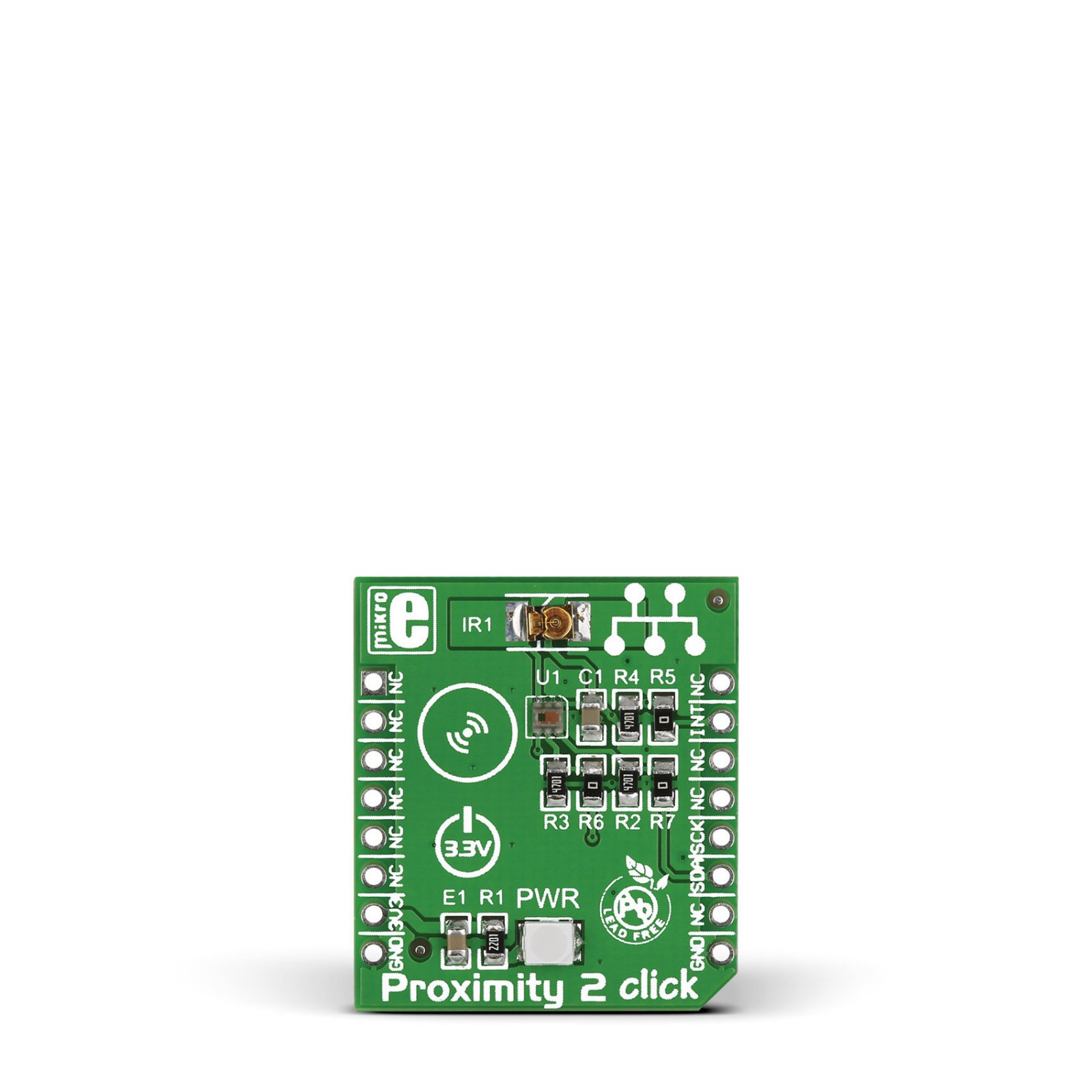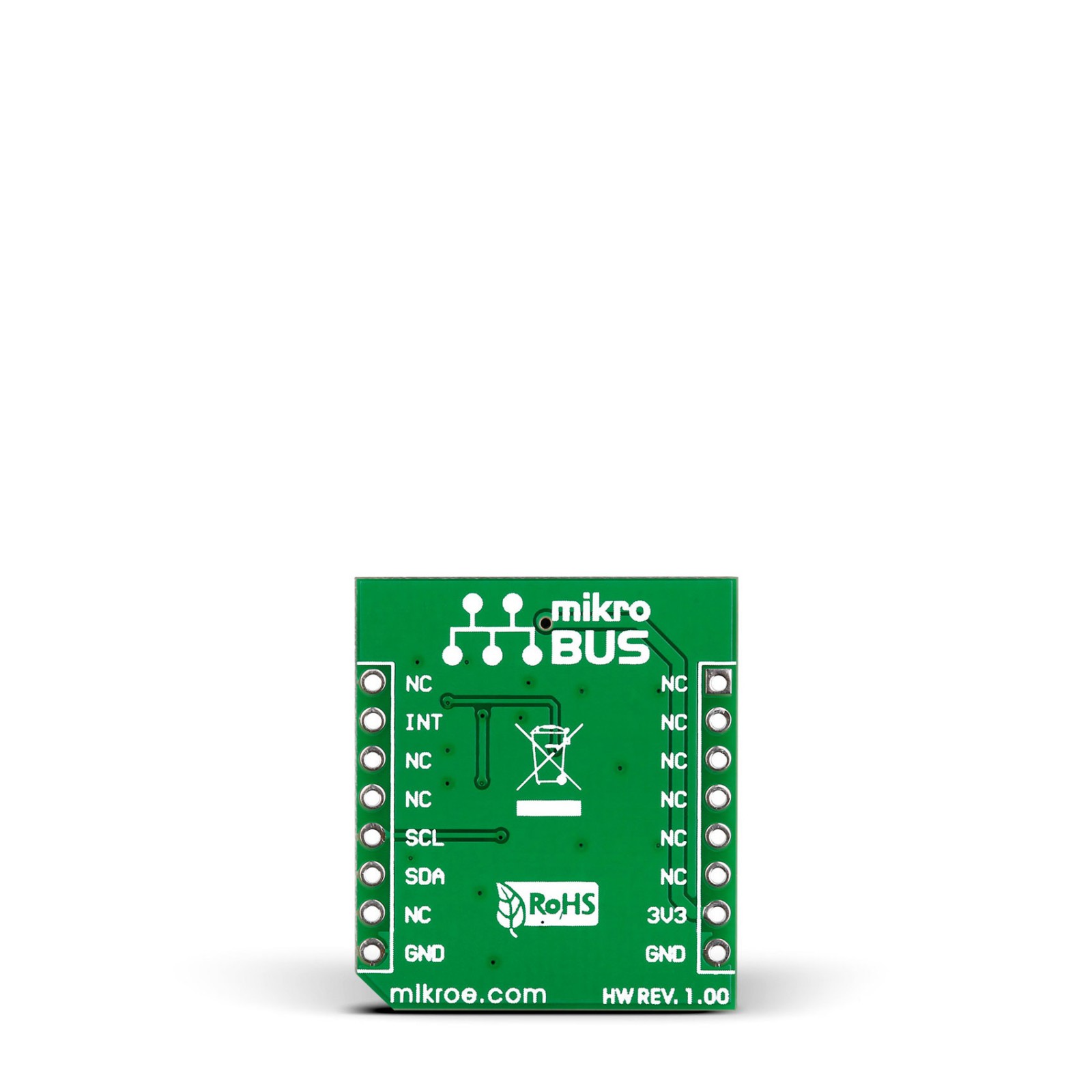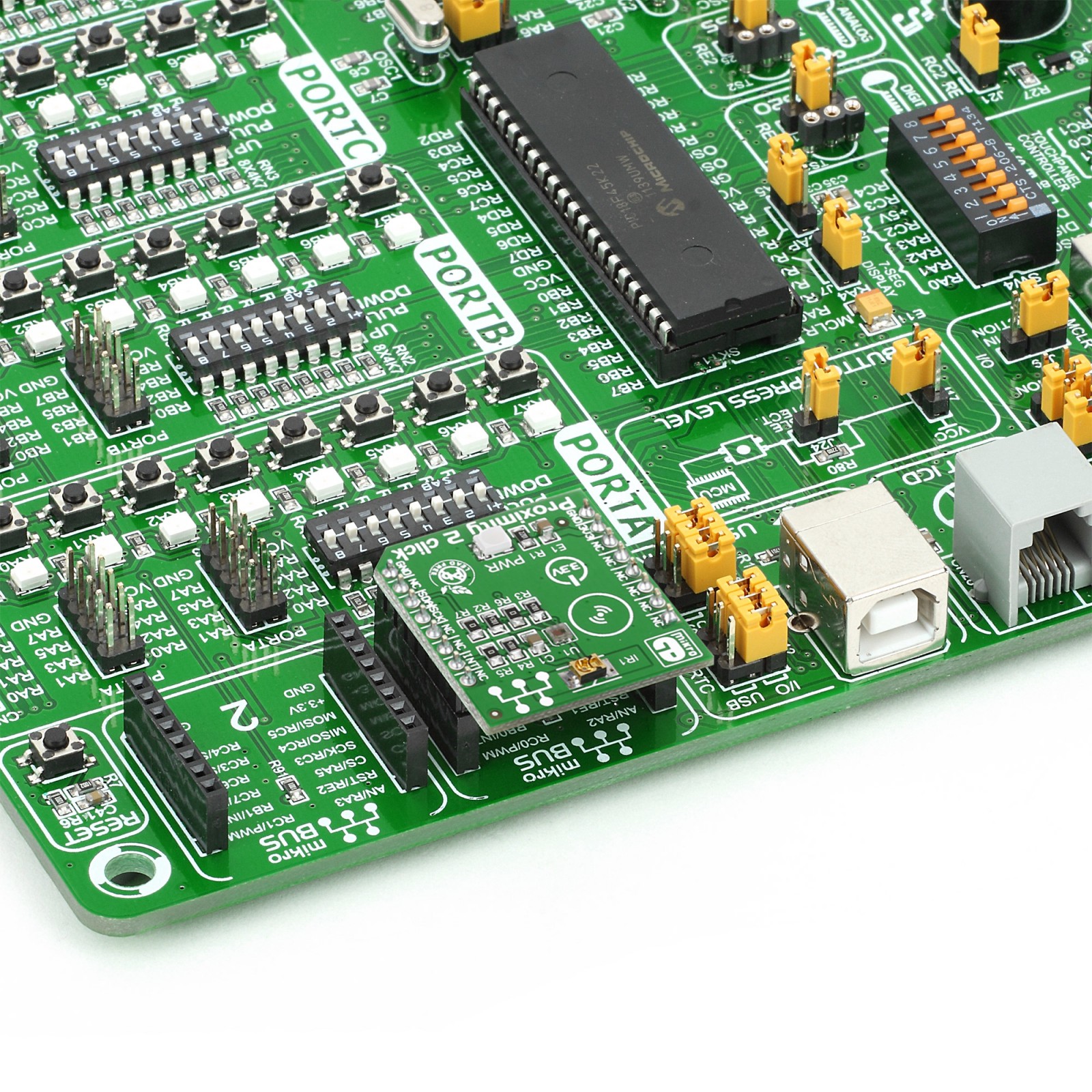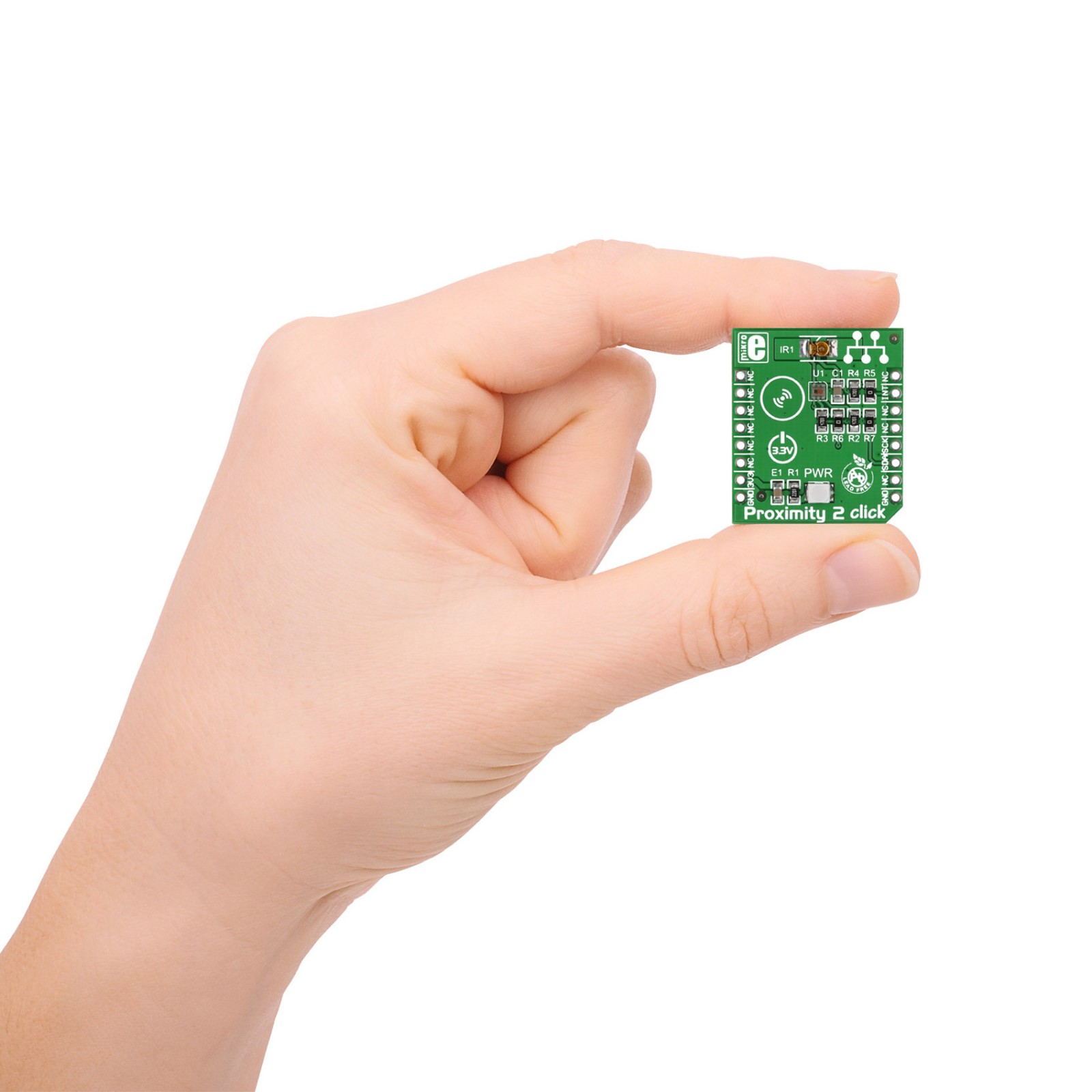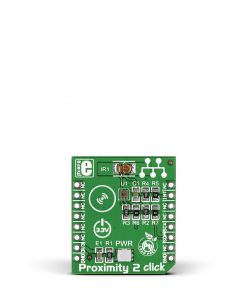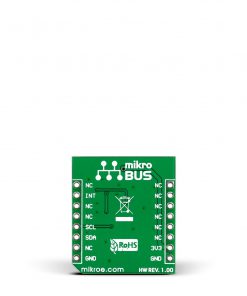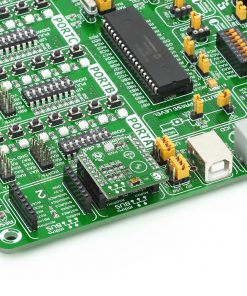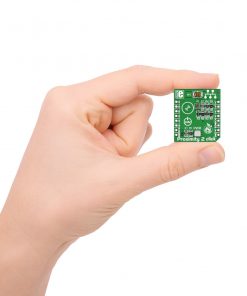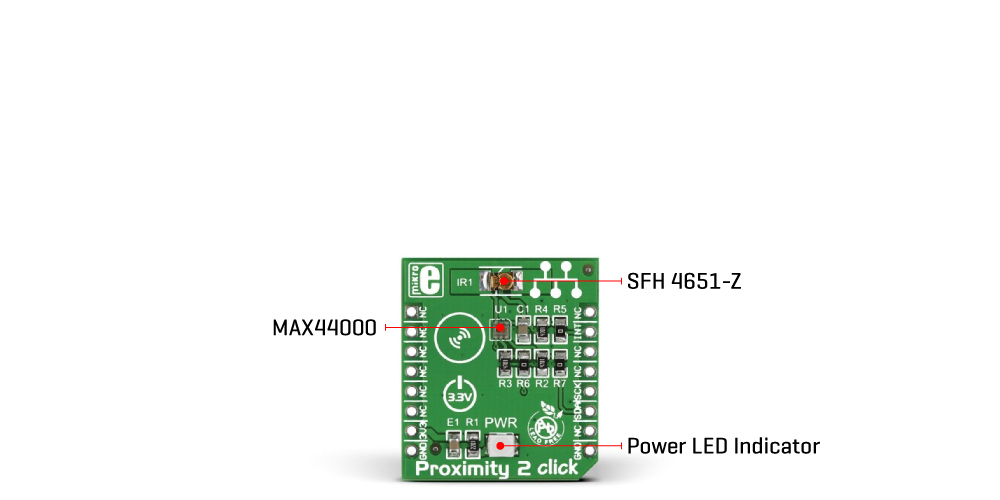PROXIMITY 2 Click
R435.00 ex. VAT
Proximity 2 Click is a compact add-on board providing a close-range proximity sensing solution. This board features the MAX44000, an I2C-configurable ambient light sensor with an integrated infrared proximity sensor from Analog Devices. The MAX44000 consists of an array of photodiodes that convert light into current, which the internal circuitry converts into a digital value. An integrated ambient sensor has a wide dynamic range from 0.03lux to 65,535lux measurements, while IR close-range proximity detector (2cm) is matched with an integrated IR LED driver for the onboard high power 850nm IR LED, the SFH 4651-Z. This Click board™ is suitable for consumer and industrial applications, such as handheld accessories, presence and ambient light detection, and many more.
Proximity 2 Click is supported by a mikroSDK compliant library, which includes functions that simplify software development. This Click board™ comes as a fully tested product, ready to be used on a system equipped with the mikroBUS™ socket.
Stock: Lead-time applicable.
| 5+ | R413.25 |
| 10+ | R391.50 |
| 15+ | R369.75 |
| 20+ | R355.83 |

